Search scope:
排序: Display mode:
An Intelligent Manufacturing Platform of Polymers: Polymeric Material Genome Engineering Perspective
Liang Gao, Liquan Wang, Jiaping Lin, Lei Du
Engineering 2023, Volume 27, Issue 8, Pages 31-36 doi: 10.1016/j.eng.2023.01.018
Polymeric materials with excellent performance are the foundation for developing high-level technology and advanced manufacturing. Polymeric material genome engineering (PMGE) is becoming a vital platform for the intelligent manufacturing of polymeric materials. However, the development of PMGE is still in its infancy, and many issues remain to be addressed. In this perspective, we elaborate on the PMGE concepts, summarize the state-of-the-art research and achievements, and highlight the challenges and prospects in this field. In particular, we focus on property estimation approaches, including property proxy prediction and machine learning prediction of polymer properties. The potential engineering applications of PMGE are discussed, including the fields of advanced composites, polymeric materials for communications, and integrated circuits.
Keywords: Polymeric materials Materials genome approach Machine learning Property prediction Rational design
Development and Prospect of High Performance Polymer Composites in China
Cao Weiyu, Yang Xueping, Zhang Ousheng
Strategic Study of CAE 2020, Volume 22, Issue 5, Pages 112-120 doi: 10.15302/J-SSCAE-2020.05.010
High performance polymer composites have become an indispensable strategic material for national defense and economic development due to their excellent comprehensive properties. They have broad prospects for development since they have been widely applied in various fields such as aerospace, wind power generation, rail transit, and automobile. The macro development demand of China for high performance polymer composites is analyzed in this paper. The current status and characteristics of fiber reinforcement such as carbon fiber, aramid fiber, and high performance glass fiber as well as polymer resin matrix materials such as epoxy, phenolicresin, and special resin is reviewed. The existing problems and developing objective are also proposed. Specifically, an industrialization system including key technology research and engineering application for the carbon fiber has been established, allowing the carbon fiber industry to develop toward high performance and low cost. The industrial production of para-aramid fiber is preliminarily realized and the glass fiber industry has maintained a stable growth. However, the resin matrix materials for high performance polymer composites face a severe situation. Furthermore, suggestions are proposed based on the demand of development from the viewpoint of independent innovation, demand orientation, construction of industrial chain, personnel training, and industrial innovation, hoping to provide an effective reference for the development of high performance polymer composites in China.
Keywords: high performance fiber polymer resin matrix composites
A Novel Potential Flame-retarded Polymeric Material——Polymer/Inorganics Nanocomposite
Ou Yuxiang,Wu Junhao,Wang Jianrong
Strategic Study of CAE 2001, Volume 3, Issue 2, Pages 86-90
A novel potential flame-retarded polymeric material——olymer/inorganics nanocomposite is reviewed. The characteristics and preparation methods of this kind of material are briefly described. The flame retardancies of both PPgMA (polypropylene graft maleic anhydride) /LS (layered silicate) and PS/LS nanocomposites are summarized in detail, and the effects of structures of PS/LS nanocomposites on material´s flame retardancy are discussed.
Keywords: polymer nanocomposite flame retardancy
Advances in preparation methods of smart polymeric gating membranes
Xie Rui,Liu Zhuang,Ju Xiaojie,Wang Wei,Chu Liangyin
Strategic Study of CAE 2014, Volume 16, Issue 12, Pages 94-101
Smart polymeric gating membranes are composed of smart polymers and non-stimuli-responsive substrate membrane. The smart membranes can automatically change the hydrophilicity/hydrophobicity on the surface as well as trans-membrane permeability and selectivity in response to the environmental stimuli, which is attributable to the stimuli-responsive variation of hydrophilicity/hydrophobicity and configuration of the smart polymers in the membrane. Smart polymeric gating membranes are used for anti-fouling filtration, affinity separation, “on/off” control of enzyme reaction and controlled release, etc. The way to prepare such membranes affects the important parameters of smart polymeric gating membranes, such as the stimuli-responsive characteristics, stability and reproducibility. There are three kinds of preparation methods to fabricate the smart polymeric gating membranes according to when the smart polymers are added into the membrane materials. They are the methods introducing smart polymers by the modification of substrate membranes materials after membrane preparation, by the modification of substrate membrane materials before membrane preparation and by blending smart polymers during the membrane preparation. The definitions, subcategory, mechanisms and new advances of these preparation methods are introduced separately, and their advantages and disadvantages are addressed. The method that introduces smart polymers by the modification of substrate membranes materials after membrane preparation is the most widely employed to form the smart polymeric gating membranes. However, the method that blends smart polymers during the membrane preparation has great potentials to the mass production of smart polymeric gating membranes in the future. This paper will provide valuable guidance for the efficient preparation of smart polymeric gating membranes with stable and satisfactory stimuli-responsive characteristics.
Keywords: smart polymeric membranes smart cross-linked gel smart linear polymer preparative method phase inversion
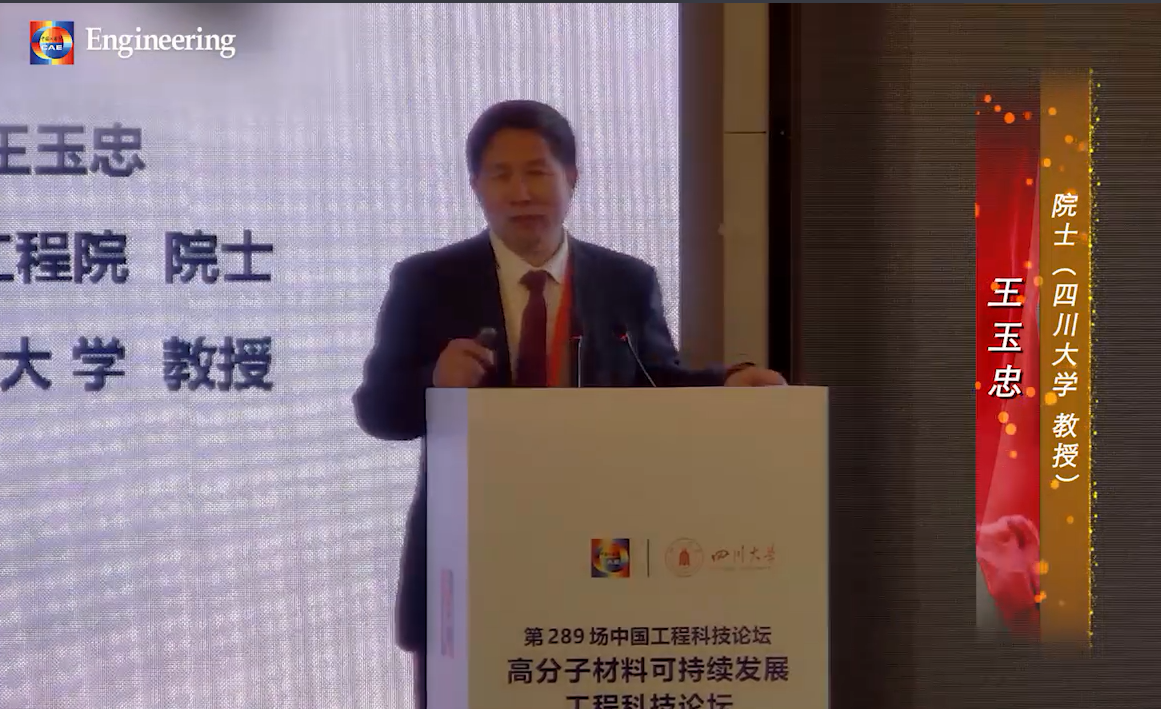
Wang Yuzhong: Recyclable Biodegradable Polymer Materials (2019.5.6)
王玉忠(院士)
27 Jan 2021
Keywords: 高分子材料

Qu Jinping, Green and Efficient Remanufacturing of Polymer Materials (2019.5.6)
瞿金平(院士)
20 Feb 2021
Keywords: 高分子材料
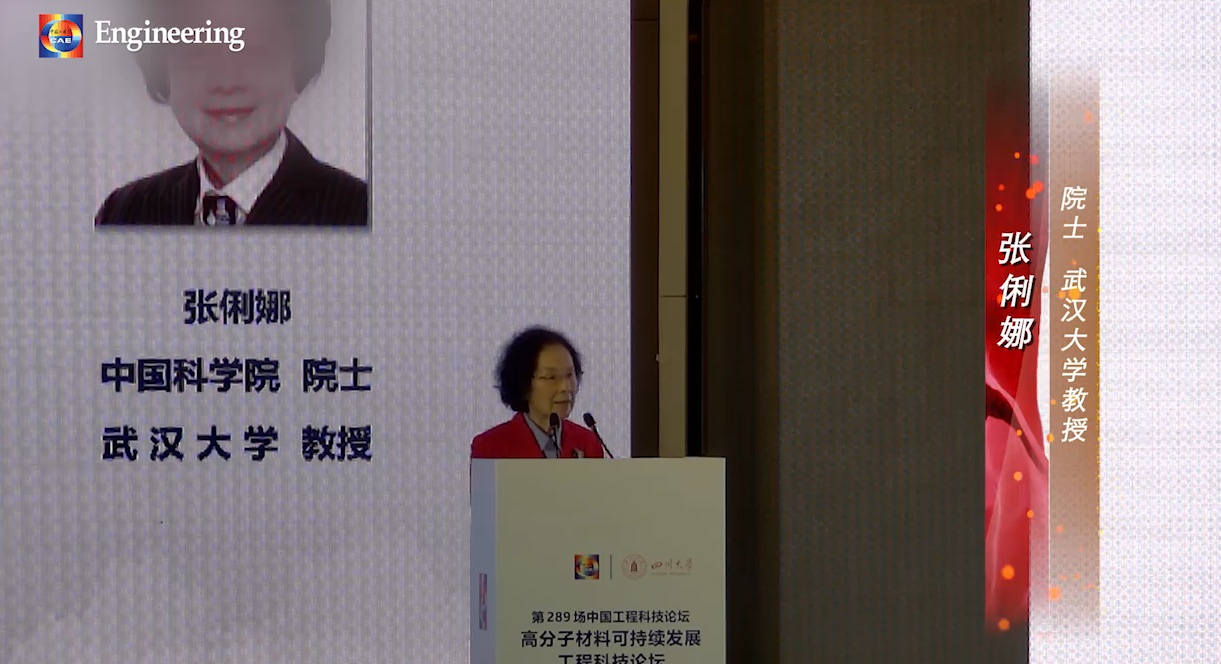
Zhang Lina: Natural Polymers Build Sustainable and Environmentally Friendly Materials (2019.5.6)
张俐娜(院士)
27 Jan 2021
Keywords: 高分子材料
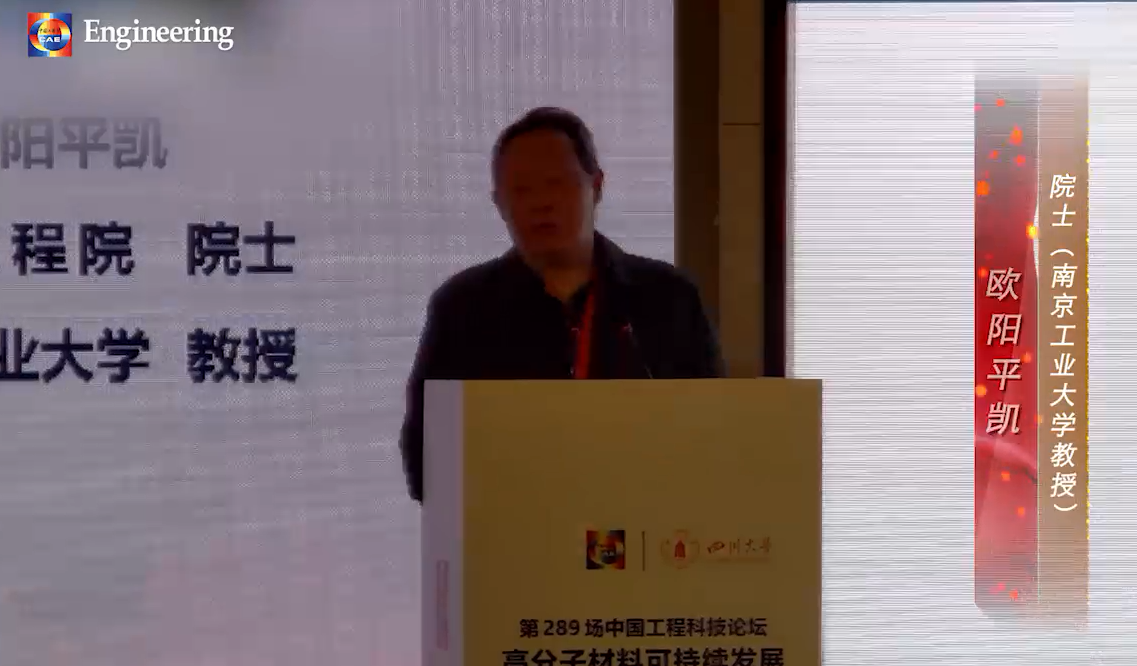
Ouyang Pingkai: Study on Bio-based Polymer Materials (2019.5.6)
欧阳平凯(院士)
27 Jan 2021
Keywords: 高分子材料
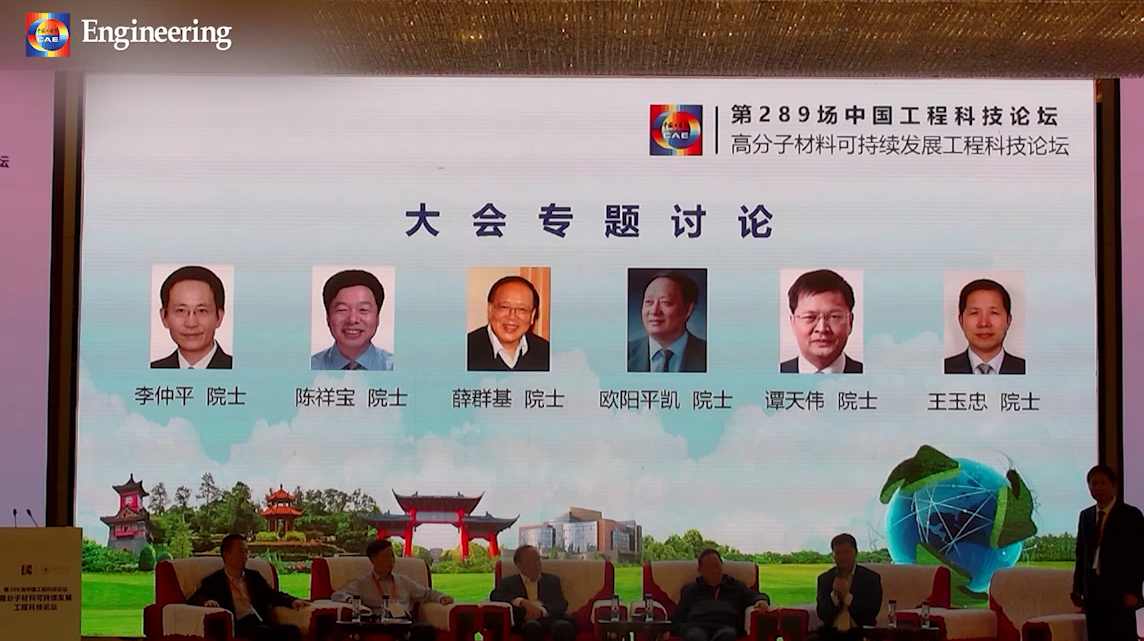

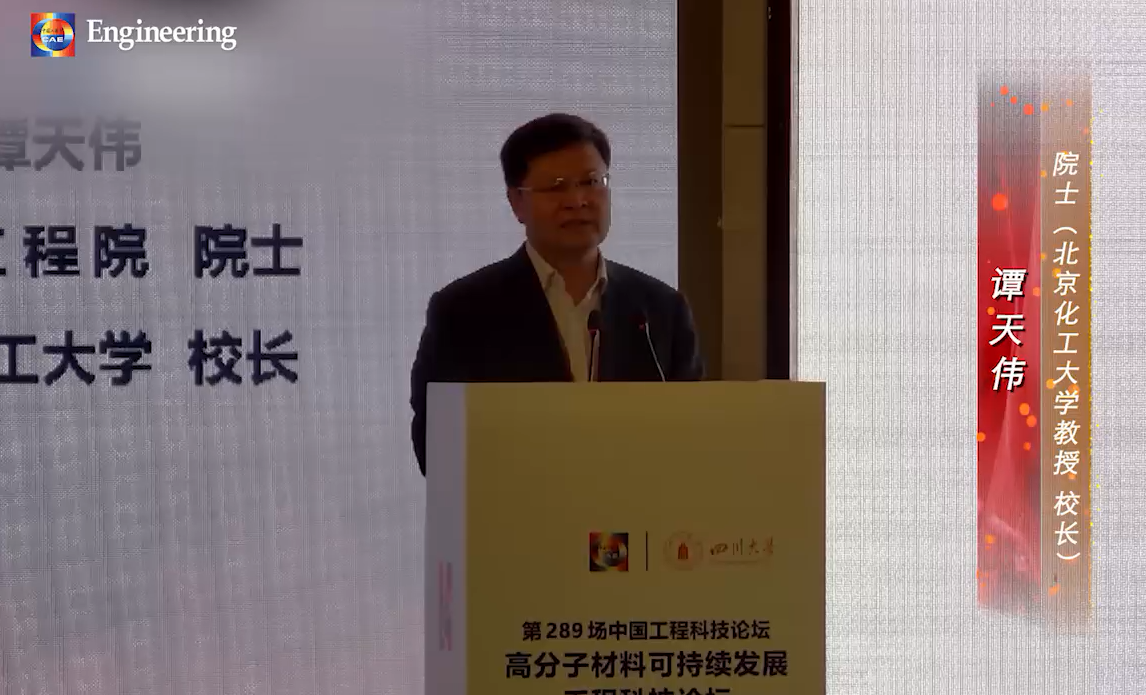
Tan Tianwei, Bio-Based Monomers and Processing Aids for Polymers (2019.5.6)
谭天伟(院士)
27 Jan 2021
Keywords: 高分子材料
Fundamental and application of amphiphilic copolymers in high performance MF/UF membranes
Zhu Baoku,Cui Yue,Wang Jun,Wang Nachuan, Yao Zhikan,Zhu Liping
Strategic Study of CAE 2014, Volume 16, Issue 12, Pages 87-93
To produce high performance polymer microfiltration/ultrafiltration (MF/UF) membranes with lower production cost, the amphiphilic copolymers and their corresponding blend membrane were presented and investigated. A series of amphiphilic copolymers with different compositions and sequence structures were synthesized via living radical polymerization. The synthesized copolymers were blended into various membranes via phase inversion process. It was found that, during the phase inversion process, amphiphilic copolymer migrated spontaneously to the membrane surface, resulting the enrichment of hydrophilic components in surface layer. This hydrophilic layer provided the membranes with improved hydrophilicity and fouling resistance. Meanwhile, the better compatibility between polymer base and hydrophobic components prevented the loss of amphiphilic copolymers in real application of the blend membranes. Based on the fundamental in structures and properties of the blend membranes, large-scale preparation of amphiphilic polymers and corresponding MF/UF blend membranes were achieved. The produced blend microporous membranes have been widely used in various areas including water purification, wastewater treatment and medical filtering, etc.
Keywords: amphiphilic copolymers blend porous membrane surface enrichment hydrophilicity anti-fouling

Chen Xuegeng: New Development of Plastic Film Pollution Control Technology (2019.5.6)
陈学庚(院士)
27 Jan 2021
Keywords: 高分子材料

Tang Yong: Carbon Cycle — Some Thoughts on the Sustainable Development of Plastics (2019.5.6)
唐勇(院士)
20 Feb 2021
Keywords: 高分子材料
A General Strategy to Electrospin Nanofibers with Ultrahigh Molecular Chain Orientation Article
Xian Wen, Jian Xiong, Zhaoyang Sun, Liming Wang, Jianyong Yu, Xiaohong Qin
Engineering 2023, Volume 29, Issue 10, Pages 179-187 doi: 10.1016/j.eng.2022.09.008
The degree of polymer chain orientation is a key structural parameter that determines the mechanical and physical properties of fibers. However, understanding and significantly tuning the orientation of fiber macromolecular chains remain elusive. Herein, we propose a novel electrospinning technique that can efficiently modulate molecular chain orientation by controlling the electric field. In contrast to the typical electrospinning method, this technique can piecewise control the electric field by applying high voltage to the metal ring instead of the needle. Benefiting from this change, a new electric field distribution can be realized, leading to a non-monotonic change in the drafting force. As a result, the macromolecular chain orientation of polyethylene oxide (PEO) nanofibers was significantly improved with a record-high infrared dichroic ratio. This was further confirmed by the sharp decrease in the PEO jet fineness of approximately 80% and the nanofiber diameter from ∼298 nm to ∼114 nm. Interestingly, the crystallinity can also be adjusted, with an obvious drop from 74.9% to 31.5%, which is different from the high crystallinity caused by oriented chains in common materials. This work guides a new perspective for the preparation of advanced electrospun nanofibers with optimal orientation–crystallinity properties, a merited feature for various applications.
Keywords: Molecular orientation Electrospinning Nanofibers Electric field Polyethylene oxide
Title Author Date Type Operation
An Intelligent Manufacturing Platform of Polymers: Polymeric Material Genome Engineering
Liang Gao, Liquan Wang, Jiaping Lin, Lei Du
Journal Article
Development and Prospect of High Performance Polymer Composites in China
Cao Weiyu, Yang Xueping, Zhang Ousheng
Journal Article
A Novel Potential Flame-retarded Polymeric Material——Polymer/Inorganics Nanocomposite
Ou Yuxiang,Wu Junhao,Wang Jianrong
Journal Article
Advances in preparation methods of smart polymeric gating membranes
Xie Rui,Liu Zhuang,Ju Xiaojie,Wang Wei,Chu Liangyin
Journal Article
Wang Yuzhong: Recyclable Biodegradable Polymer Materials (2019.5.6)
王玉忠(院士)
27 Jan 2021
Conference Videos
Qu Jinping, Green and Efficient Remanufacturing of Polymer Materials (2019.5.6)
瞿金平(院士)
20 Feb 2021
Conference Videos
Zhang Lina: Natural Polymers Build Sustainable and Environmentally Friendly Materials (2019.5.6)
张俐娜(院士)
27 Jan 2021
Conference Videos
Ouyang Pingkai: Study on Bio-based Polymer Materials (2019.5.6)
欧阳平凯(院士)
27 Jan 2021
Conference Videos
Ouyang Pingkai: Engineering Science and Technology Forum for Sustainable Development of Polymer Materials (2019.5.6)
欧阳平凯(院士)
27 Jan 2021
Conference Videos
Wang Yuzhong: Engineering Science and Technology Forum for Sustainable Development of Polymer Materials (2019.5.6)
王玉忠(院士)
27 Jan 2021
Conference Videos
Tan Tianwei, Bio-Based Monomers and Processing Aids for Polymers (2019.5.6)
谭天伟(院士)
27 Jan 2021
Conference Videos
Fundamental and application of amphiphilic copolymers in high performance MF/UF membranes
Zhu Baoku,Cui Yue,Wang Jun,Wang Nachuan, Yao Zhikan,Zhu Liping
Journal Article
Chen Xuegeng: New Development of Plastic Film Pollution Control Technology (2019.5.6)
陈学庚(院士)
27 Jan 2021
Conference Videos
Tang Yong: Carbon Cycle — Some Thoughts on the Sustainable Development of Plastics (2019.5.6)
唐勇(院士)
20 Feb 2021
Conference Videos








